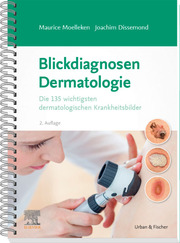Management of Periprosthetic Joint Infection (E-Book, PDF)
Management of Periprosthetic Joint Infection
eBook - A global perspective on diagnosis, treatment options, prevention strategies and their economic impact
Bibliographische Informationen
Format: Digitale Rechteverwaltung: Digitales Wasserzeichen
Beschreibung
Periprosthetic joint infection (PJI) is among the most serious complications in the field of endoprosthetics. The number of PJIs is increasing worldwide and poses a real interdisciplinary challenge for everyone involved. For the patient concerned, it is necessary to promptly work out an adequate therapy solution to fight off the infection. Both the clinical experience of the surgeon and the proper diagnostic processes are prerequisite for the reliable detection and identification of an infection. The microbiologist is responsible for identifying the causative germs by screening the patients synovial fluid and tissue samples. Based on the findings and subsequent resistance testing, the infectious disease specialist can recommend the appropriate antibiotic therapy. Furthermore, the clinical pharmacist is consulted regularly throughout the therapy to discuss the risk of potential drug interactions. The surgeon will proceed with the revision surgery, following defined algorithms. Adequate radical debridement of infected and necrotic surrounding tissue is the most important step towards a successful cure of the infection. Accompanying the surgery, anti-infective agents are given systemically and locally. While systemic application of anti-infectives mainly reduces the number of haematogenic-spreading planktonic germs, local application immediately forms a colonization barrier and protects the implant from sessile biofilm formation. Concurrently, antibiotics are actively released from the implant, resulting in local germ reduction. Thus, local agents are embedded in the concept of surgical PJI treatment as a reliable adjuvant measure and they sustainably support the successful outcome. In one-stage procedures, local agents are released from specialized antibiotic-loaded bone cements, while in two- or multi-stage procedures, local agents are released from corresponding temporary spacers (interim prostheses). Even from an economic standpoint, the combination of systemic and local agent application is meaningful. Furthermore, there are some interesting trends towards the coating of metallic implants to protect against biofilm formation on the implant surface.
On the basis of their personal experience, specialists from all over the world present, explain and discuss preventive approaches, appropriate diagnostic strategies for detection, reproducible effective surgical treatments as well as the economic impact of PJI. The reader can use this book as a solid platform for comparing their own approach to PJI treatment with the specialists recommendations.
Autorenportrait
Univ. Prof. Dr. Klaus-Dieter Kühn, Senior Scientific Advisor, Heraeus Medical GmbH, Wehrheim im Taunus
Inhalt
E-Book Informationen
„eBooks“ sind digitale Bücher. Um eBooks lesen zu können, wird entweder eine spezielle Software für Computer, Tablets und Smartphones oder ein eBook-Reader benötigt. Da es eBooks in unterschieldichen Formaten gibt, gilt es, folgendes zu beachten.
Von uns werden digitale Bücher in drei Formaten ausgeliefert. Die Formate sind EPUB mit DRM (Digital Rights Management), EPUB ohne DRM und PDF. Bei den Formaten PDF und EPUB ohne DRM müssen Sie lediglich prüfen, ob Ihr eBook-Reader kompatibel ist. Wenn ein Format mit DRM genutzt wird, besteht zusätzlich die Notwendigkeit, dass Sie einen kostenlosen Adobe® Digital Editions Account besitzen. Wenn Sie ein eBook, das Adobe® Digital Editions benötigt, herunterladen, erhalten Sie eine ASCM-Datei, die zu Digital Editions hinzugefügt und mit Ihrem Account verknüpft werden muss. Einige eBook-Reader (zum Beispiel PocketBook Touch) unterstützen auch das direkte Eingeben der Login-Daten des Adobe Accounts – somit können diese ASCM-Dateien direkt auf das betreffende Gerät kopiert werden.
Da eBooks nur für eine begrenzte Zeit – in der Regel 6 Monate – herunterladbar sind, sollten Sie stets eine Sicherheitskopie auf einem Dauerspeicher (Festplatte, USB-Stick oder CD) anlegen. Außerdem ist die Anzahl der Downloads auf maximal 5 begrenzt.
Andere Artikel von "Klaus-Dieter Kühn"
Lieferbar innerhalb 14 Tagen

Lieferbar innerhalb 14 Tagen

Lieferbar innerhalb 14 Tagen

Lieferbar innerhalb ca. einer Woche

Weitere Artikel aus der Kategorie "Medizin/Klinische Fächer"
Derzeit nicht verfügbar

Derzeit nicht verfügbar

Lieferbar innerhalb 24 Stunden

Lieferbar innerhalb ca. einer Woche









